Unique Carnival Customs Around Greece
- by XpatAthens
- Monday, 17 February 2025
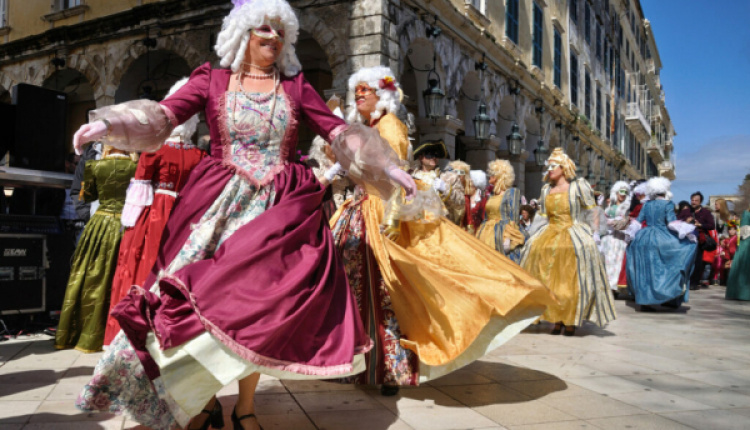
When apokries arrives in Greece (aka carnival season), it brings with it a whirlwind of festivities and traditions that capture the essence of the season. Amidst the familiar dances and masquerades lie some of the most peculiar and intriguing customs, each with their own story to tell.
Let's explore some weird and wonderful traditions that have been passed down through generations.
Alevromoutzouroma, Galaxidi
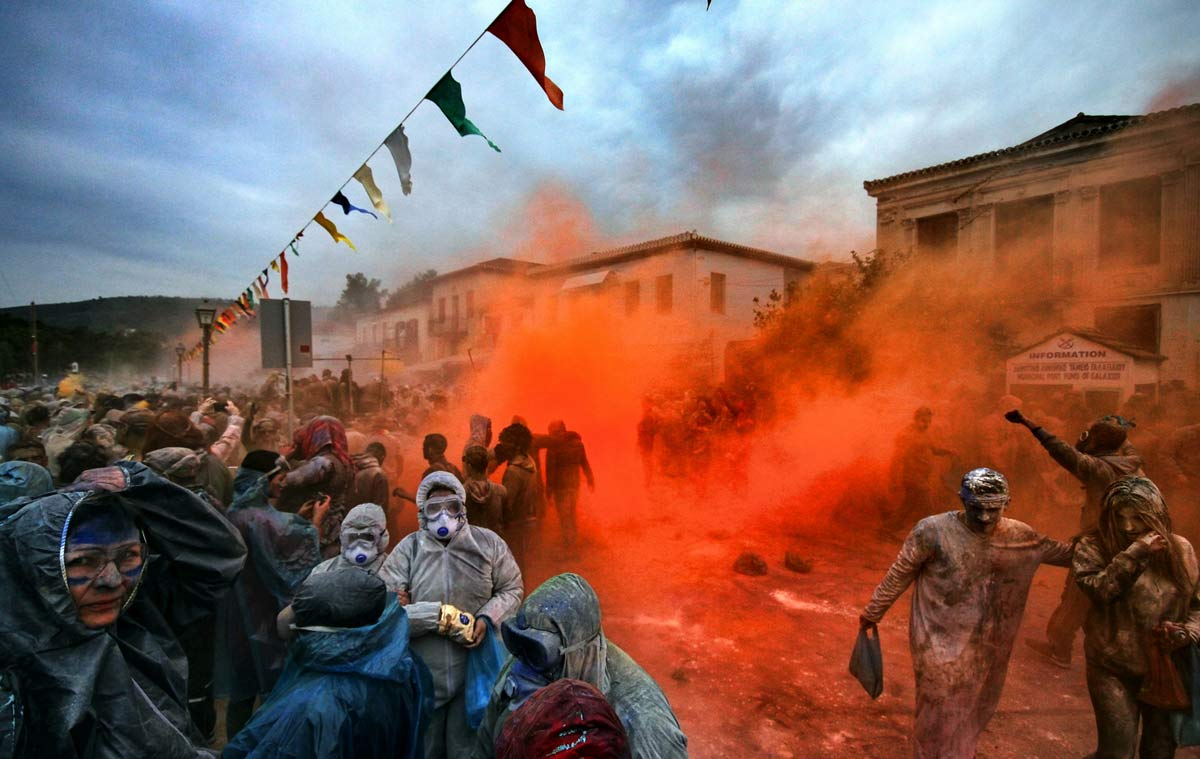 Credit: George Tzafos Courtesy: alevromoutzouroma.gr
Credit: George Tzafos Courtesy: alevromoutzouroma.gr
In the town of Galaxidi, Apokries takes on a uniquely messy tradition known as Alevromoutzouroma, or Flour Wars. This custom likely traces back to the Byzantine era, when chariot racers would paint their faces. However, it wasn't until the maritime era, starting around 1840, that it gained widespread popularity, particularly among sailors bidding farewell to their families before embarking on their journeys.
During this festive occasion, the port of Galaxidi transforms into a battleground as participants armed with bags of flour engage in friendly battles, covering each other in powdery white. For visitors who prefer to stay flour-free, there is a simple solution: they have to sport a "moutzoura," or a cross on their forehead made of shoe polish, ensuring they remain unscathed amidst the floury madness.
Genitsaroi & Boules, Naousa
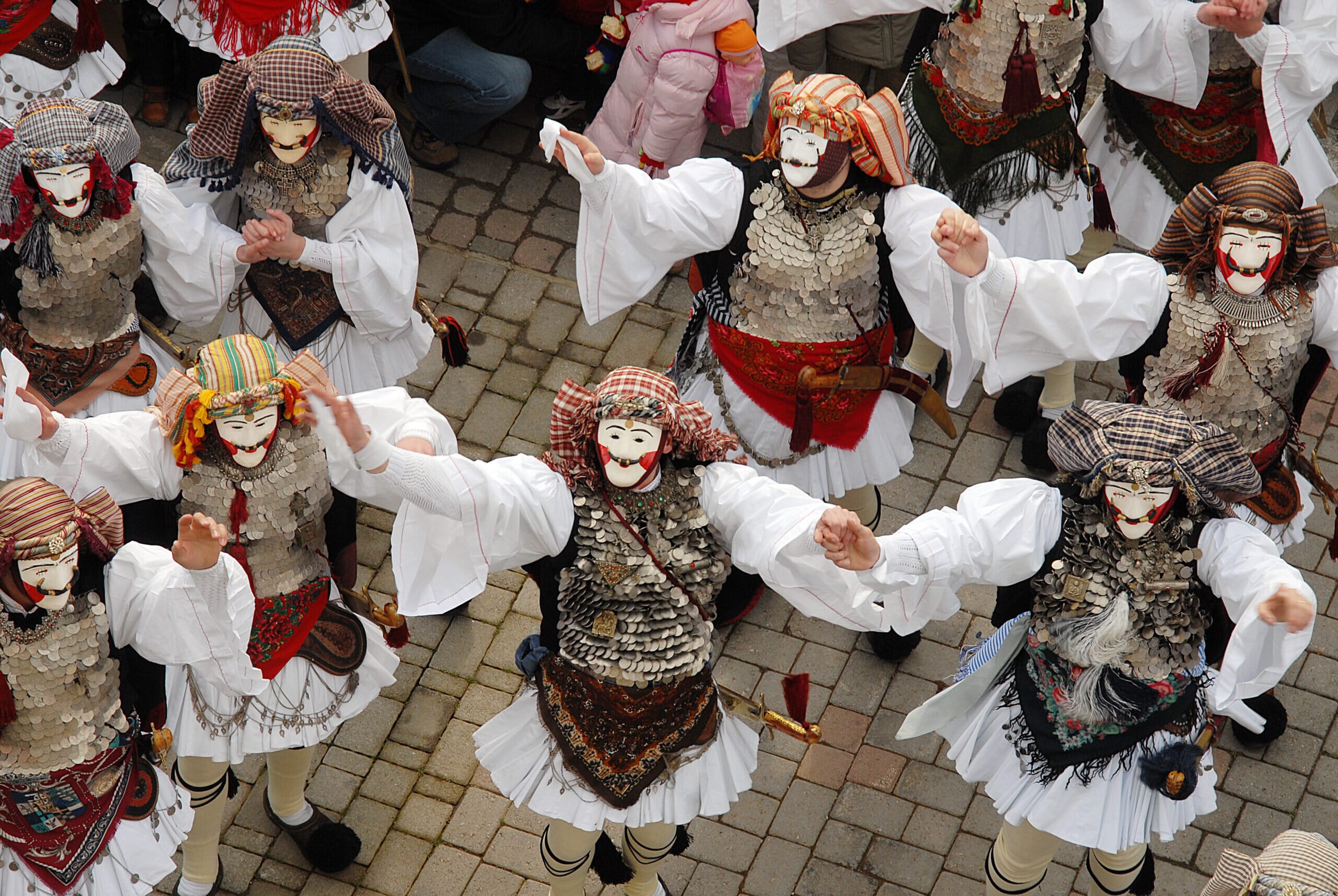 Credit: Xydas Yiannis
Credit: Xydas Yiannis
In Naousa, during the festive season of Apokries, the town bursts into a vibrant celebration filled with laughter and colorful traditions. One such tradition involves the Genitsaroi and Boules, who bring history alive amidst a whirlwind of excitement. Months of preparation lead up to this uproarious affair, with participants scouring for the perfect attire and borrowing shiny baubles from family and friends.
The Genitsaroi proudly don their fustanellas, traditional skirts adorned with sparkling silver, and brandish their long swords, known as "palas." Their faces are covered with wax masks. On the other hand, the Boules, men dressed as women, are gracefully draped in flowing dresses. Their faces, too, hidden behind wax masks embellished with ribbons and flowers, exude an air of mystery. As the procession begins, led by excited children, the air fills with the lively melodies of the zurna and the rhythmic beats of the daouli drum. It's a spectacle of joy and merriment, marking the climax of this enchanting celebration.
The Stealing of the Bride, Rethymno
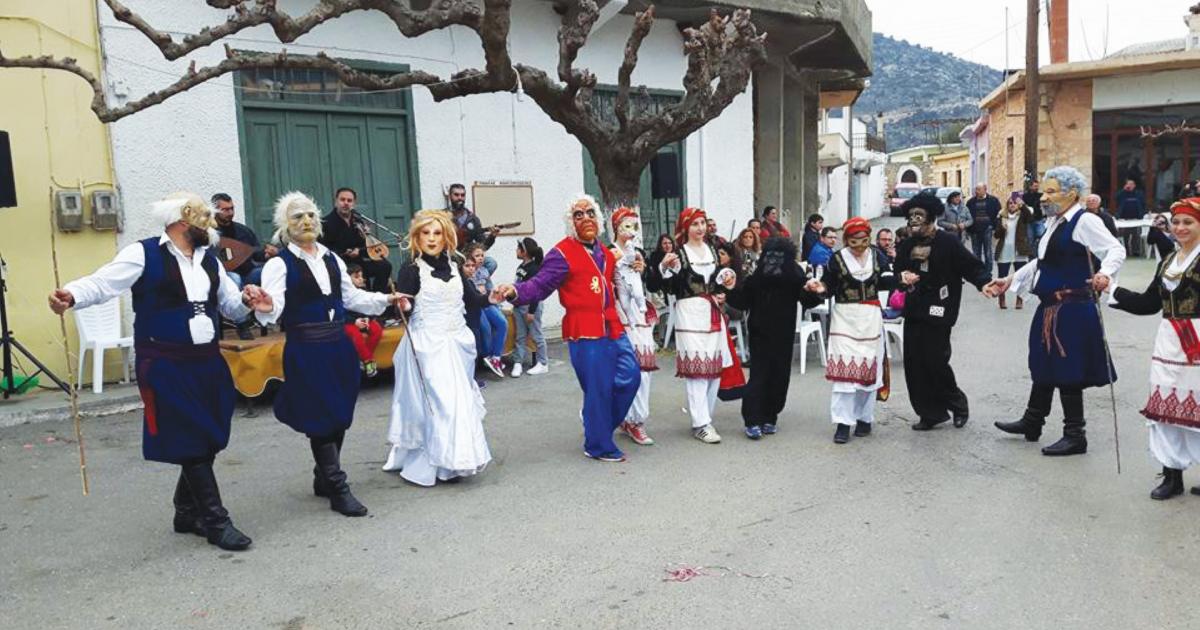
In the municipality of Mylopotamos in Rethymno, a unique tradition is revived during Clean Monday. This custom dates back to the Turkish occupation era. Participants reenact the scene with figures representing the bride, her six brothers, and characters like the Turkish judge. For about four centuries, locals have kept this tradition alive through playful acts, dancing, and enjoying traditional treats.
Before the wedding, the bride is "examined" by the Turkish judge to test her purity. The scene unfolds with the bride's siblings dancing in the square, while spectators pretend to be Turks trying to "steal" her. Despite attempts by the pretend Turks, the siblings protect the bride by playfully "hitting" them with screws. Eventually, the bride is "stolen" by people known to her brothers, only to return later, often pretending to be pregnant. The event is filled with laughter, music, and treats, creating a vibrant atmosphere that celebrates local culture and heritage.
Babougera, Serres
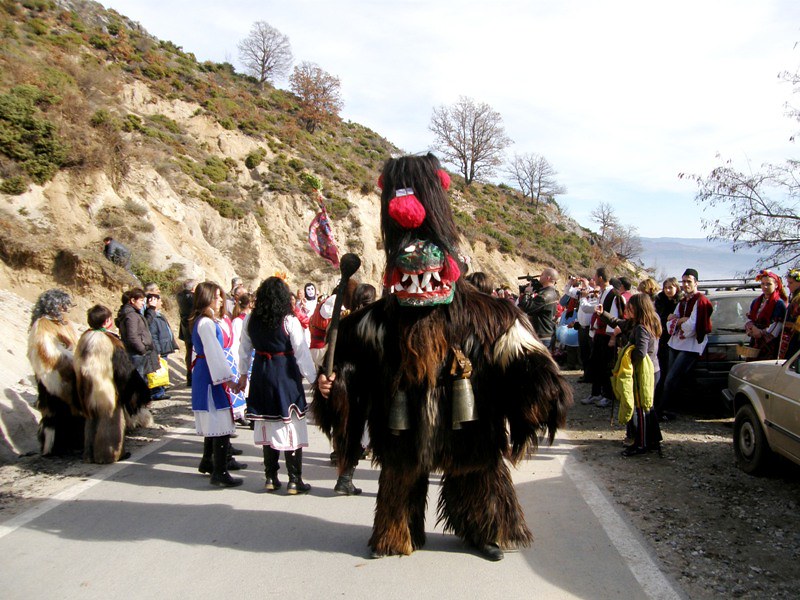 Credit: Geo Selalm
Credit: Geo Selalm
Let's explore some weird and wonderful traditions that have been passed down through generations.
Alevromoutzouroma, Galaxidi
 Credit: George Tzafos Courtesy: alevromoutzouroma.gr
Credit: George Tzafos Courtesy: alevromoutzouroma.grIn the town of Galaxidi, Apokries takes on a uniquely messy tradition known as Alevromoutzouroma, or Flour Wars. This custom likely traces back to the Byzantine era, when chariot racers would paint their faces. However, it wasn't until the maritime era, starting around 1840, that it gained widespread popularity, particularly among sailors bidding farewell to their families before embarking on their journeys.
During this festive occasion, the port of Galaxidi transforms into a battleground as participants armed with bags of flour engage in friendly battles, covering each other in powdery white. For visitors who prefer to stay flour-free, there is a simple solution: they have to sport a "moutzoura," or a cross on their forehead made of shoe polish, ensuring they remain unscathed amidst the floury madness.
Genitsaroi & Boules, Naousa
 Credit: Xydas Yiannis
Credit: Xydas YiannisIn Naousa, during the festive season of Apokries, the town bursts into a vibrant celebration filled with laughter and colorful traditions. One such tradition involves the Genitsaroi and Boules, who bring history alive amidst a whirlwind of excitement. Months of preparation lead up to this uproarious affair, with participants scouring for the perfect attire and borrowing shiny baubles from family and friends.
The Genitsaroi proudly don their fustanellas, traditional skirts adorned with sparkling silver, and brandish their long swords, known as "palas." Their faces are covered with wax masks. On the other hand, the Boules, men dressed as women, are gracefully draped in flowing dresses. Their faces, too, hidden behind wax masks embellished with ribbons and flowers, exude an air of mystery. As the procession begins, led by excited children, the air fills with the lively melodies of the zurna and the rhythmic beats of the daouli drum. It's a spectacle of joy and merriment, marking the climax of this enchanting celebration.
The Stealing of the Bride, Rethymno

In the municipality of Mylopotamos in Rethymno, a unique tradition is revived during Clean Monday. This custom dates back to the Turkish occupation era. Participants reenact the scene with figures representing the bride, her six brothers, and characters like the Turkish judge. For about four centuries, locals have kept this tradition alive through playful acts, dancing, and enjoying traditional treats.
Before the wedding, the bride is "examined" by the Turkish judge to test her purity. The scene unfolds with the bride's siblings dancing in the square, while spectators pretend to be Turks trying to "steal" her. Despite attempts by the pretend Turks, the siblings protect the bride by playfully "hitting" them with screws. Eventually, the bride is "stolen" by people known to her brothers, only to return later, often pretending to be pregnant. The event is filled with laughter, music, and treats, creating a vibrant atmosphere that celebrates local culture and heritage.
Babougera, Serres
 Credit: Geo Selalm
Credit: Geo Selalm Babougera, a blend of Greek words for "old lady" and "old man," is a custom that takes place every year in the village of Vamvakofito in Serres. In this vibrant spectacle, locals take on various roles, including grandparents, the bridal couple, a doctor, a postman, and more, dressed in old clothes and eerie masks, often crafted from sheep and goat skins. Large bells hang from their waists, and they wield tapus sticks, symbolizing protection and authority.
The Tapoutzides, pivotal figures in the performance, safeguard the group, especially the bride, from potential "kidnappers" among the audience. Their tapus sticks, derived from the Turkish word for "ball," are used forcefully, instilling fear and respect. Additionally, characters like the bear and the monkey add to the spectacle, each symbolizing different aspects of village life and traditions. The event begins with church services and progresses through the village with accompanying bagpipes and bells, culminating in lively celebrations in the central square, including feasting and dancing.
Kodonofoi, Thessaloniki
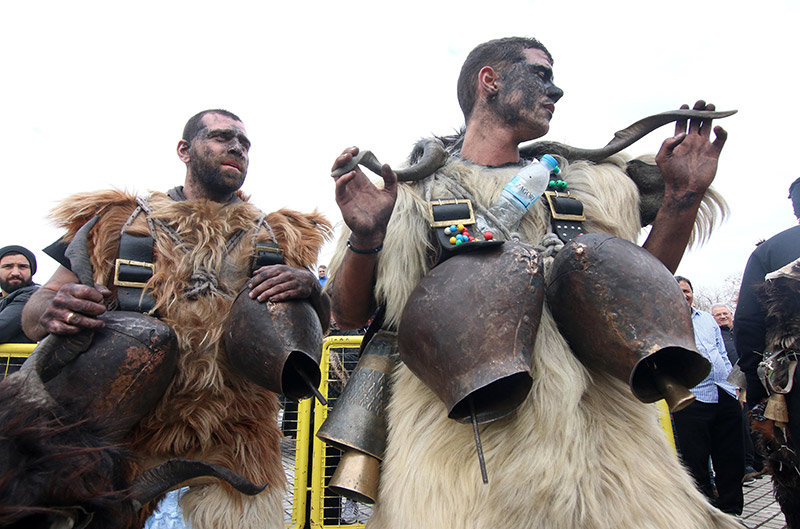 Credit: Motion Team
Credit: Motion Team
The Tapoutzides, pivotal figures in the performance, safeguard the group, especially the bride, from potential "kidnappers" among the audience. Their tapus sticks, derived from the Turkish word for "ball," are used forcefully, instilling fear and respect. Additionally, characters like the bear and the monkey add to the spectacle, each symbolizing different aspects of village life and traditions. The event begins with church services and progresses through the village with accompanying bagpipes and bells, culminating in lively celebrations in the central square, including feasting and dancing.
Kodonofoi, Thessaloniki
 Credit: Motion Team
Credit: Motion TeamDressed in elaborate attire, the Kodonoforoi of Thessaloniki, or "bell wearers," commence their parade from the White Tower, adorned with painted faces and hefty bells. Rooted in ancient practices to safeguard crops, these customs, passed down through generations, continue as rituals to ward off malevolent forces and celebrate abundance.
Embracing their heritage, villagers don sheepskin, animal hides, and masks, joining in the joyous Dionysian festivities. Amidst the clangor of bells and the spectacle of painted faces, the Kodonoforoi breathe life into tradition, embodying the enduring spirit of community and the resilience of cultural heritage in Thessaloniki.
Geroi & Koreles, Skyros
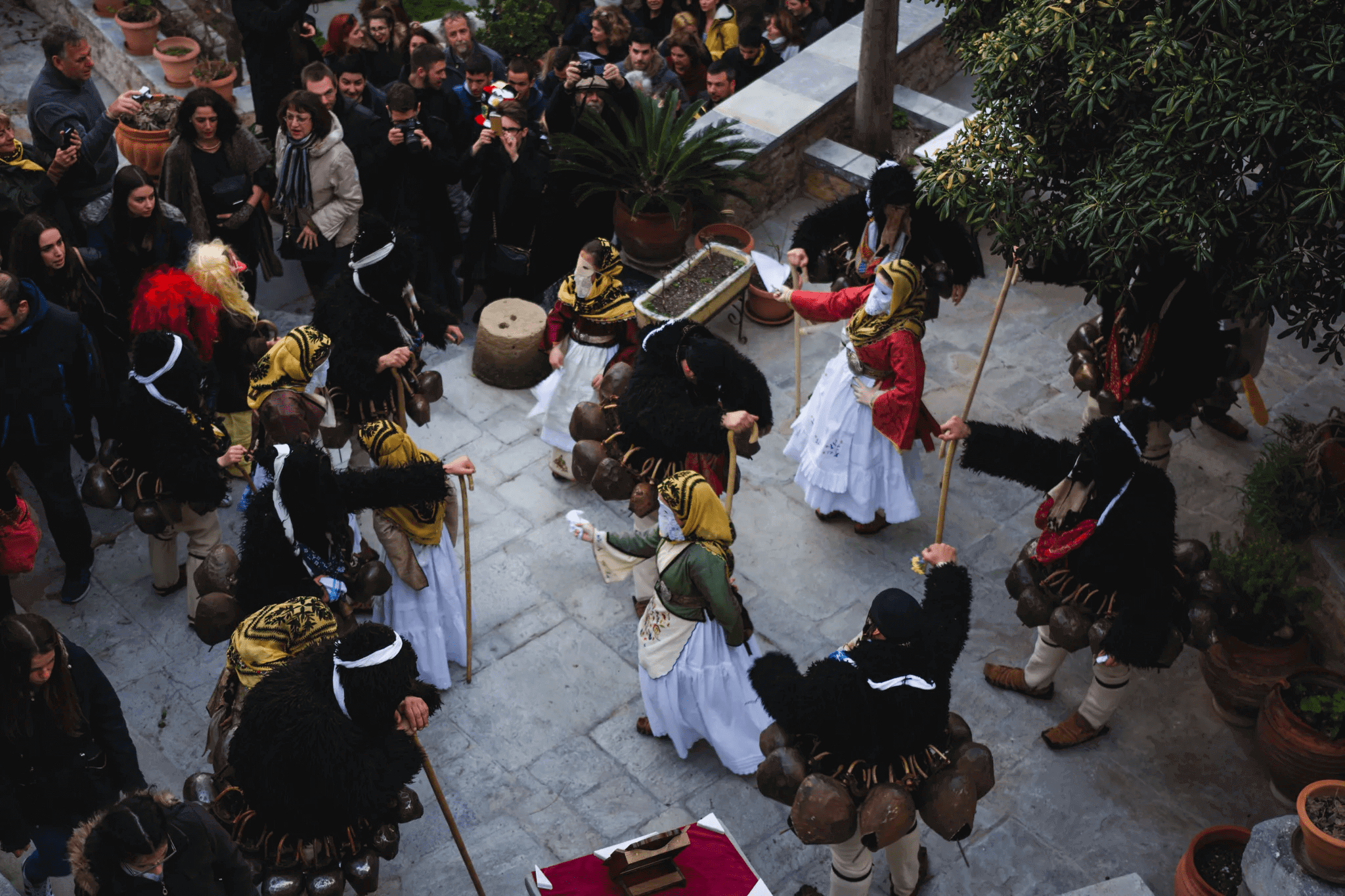
Apokries in Skyros, offers a glimpse into a colorful festival where tradition meets celebration. Among its key players are three central characters: the Old Man, Korela, and the Frank. The Old Man is dressed in traditional shepherd attire and a goatskin mask and carries on the legacy of generations past. His outfit, complete with heavy bells around his waist, creates a rhythmic melody as he moves.Korela, often embodied by women in traditional dress, adds to the spectacle with graceful dance moves and waving scarves. Meanwhile, the Frank's attire satirizes those who embraced Western fashion, adding a touch of humor to the festivities.
Throughout the carnival, participants engage in friendly competitions and perform satirical verses, reflecting on both island life and current events. The celebrations culminate in a lively gathering at the Castle, where the community comes together to revel in Skyros's rich cultural heritage.
Embracing their heritage, villagers don sheepskin, animal hides, and masks, joining in the joyous Dionysian festivities. Amidst the clangor of bells and the spectacle of painted faces, the Kodonoforoi breathe life into tradition, embodying the enduring spirit of community and the resilience of cultural heritage in Thessaloniki.
Geroi & Koreles, Skyros

Apokries in Skyros, offers a glimpse into a colorful festival where tradition meets celebration. Among its key players are three central characters: the Old Man, Korela, and the Frank. The Old Man is dressed in traditional shepherd attire and a goatskin mask and carries on the legacy of generations past. His outfit, complete with heavy bells around his waist, creates a rhythmic melody as he moves.Korela, often embodied by women in traditional dress, adds to the spectacle with graceful dance moves and waving scarves. Meanwhile, the Frank's attire satirizes those who embraced Western fashion, adding a touch of humor to the festivities.
Throughout the carnival, participants engage in friendly competitions and perform satirical verses, reflecting on both island life and current events. The celebrations culminate in a lively gathering at the Castle, where the community comes together to revel in Skyros's rich cultural heritage.


